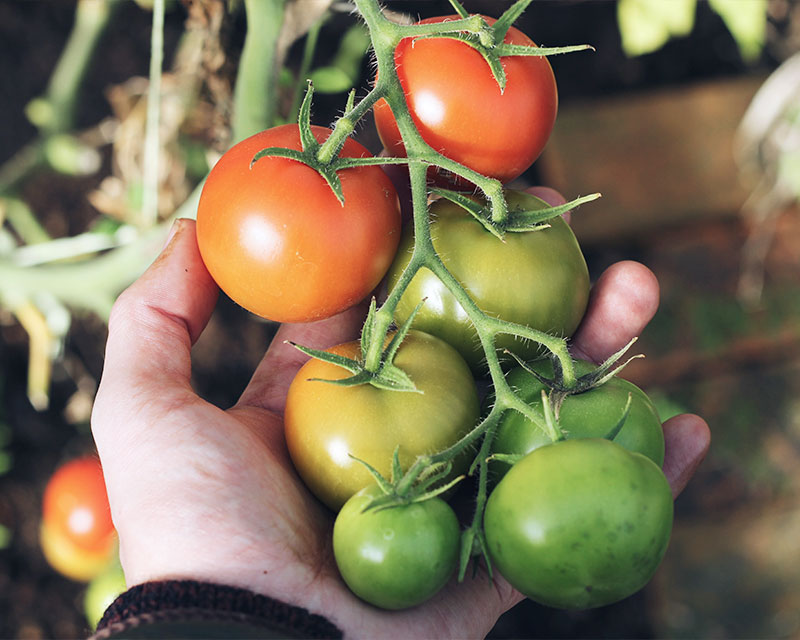After spending some time researching food groups that promote weight loss, help reduce disease risk, and extend life, I want to acknowledge some benefits of foods that can’t be as easily categorized.
In my last entry, I focused on groups of foods, like fish and legumes. I also focused on foods that provide a substantial amount of calories and bulk to one’s diet. However, real food is about more than just some protein with plain vegetables and plain starches.
Fortunately, you can make food interesting with a variety of herbs, spices, and other flavor enhancers without sacrificing nutrition. Evidence suggests that many flavor-boosting plants also boost the nutrition and health benefits of the dish.
Below are some nutritious, flavorful seasonings that you may consider using regularly in your meal plan, if you don’t already. They are widely available, have different uses, and are associated with various health benefits. Admittedly, there’s less research on spices and seasonings than on major foods and food groups, but the evidence that exists is compelling. Also, since none of these foods provide many calories on their own, they are not a concern for weight gain.
Recipes that employ these spices can be found in a variety of places. EatingWell.com and Diabetes.org are two good places to start. Or, you can ask about dishes at restaurants and grocery delis that rely more on these natural seasonings than on sugar and salt. Good luck, and enjoy!
Allium Vegetables
Garlic and onions are the classic allium vegetables, and would any Italian dish or stir-fry be the same without them? Either one of these add immeasurable richness and aroma to many types of dishes. Allium vegetables likely have myriad health benefits as well.
Many studies1 have shown that allium vegetables can reduce multiple cardiovascular disease risk factors. Allium vegetables have also been associated with lower risks of cancer2,3.
The only catch is that it takes a little effort to include them. Check out this video to learn easier and safer ways to chop an onion. For garlic, you can of course buy it pre-chopped, but you get more flavor and nutrition by chopping it yourself.
If you don’t want to peel and chop garlic each time you cook, consider blending it into a paste and freezing it in cubes. You can also blend it with either ginger or parsley for even better flavor. Garlic paste will last for at least a month when stored in an airtight bag in your freezer, and it only takes a second to throw the cubes into whatever you’re cooking when the time comes. Also, Dorot Gardens sells pre-made frozen cubes.
Turmeric
Turmeric is one of the most-studied spices on the planet. It has been used in Asia for medicinal purposes for thousands of years. It’s technically an underground stem, like ginger, but is most commonly purchased as a bright yellow-orange powder (after it’s been ground up and dried). Turmeric gives Indian curries their characteristic color, but it doesn’t taste hot, spicy, or peppery on its own.
Turmeric can be easily incorporated into many types of dishes, including stir-fry, meat sauces, and soups. It also goes great with allium vegetables (above) for a one-two punch of disease-fighting power!
Curcumin is the molecule that gives turmeric its color and provides many of the health benefits. Though curcumin isn’t fully absorbed by the body, a little black pepper helps to greatly improve its activity4. Curcumin supplements are also available.
Turmeric may provide health benefits in several areas: It is highly anti-inflammatory5, has been shown to reduce chronic pain in some conditions6, can suppress cancer cell growth7,8, and may reduce certain metabolic and cardiovascular disease risk factors9.
Turmeric has potential in other areas of health as well, since chronic inflammation is a common underlying factor in heart disease, stroke, diabetes, dementia, many forms of cancer, and certain other diseases.
Generally speaking, an anti-inflammatory diet is one of the best ways to reduce your risk of not just one, but many diseases, and turmeric appears to be one of the most anti-inflammatory foods.
Coffee
Coffee has consistently been associated with either neutral or beneficial overall effects on health. Excessive caffeine intake can disrupt sleep, but observational studies suggest that regular coffee drinkers have lower rates of diabetes, as well as lower rates of dying from heart disease or other causes10,11.
The benefits do not seem to depend on caffeine, since decaffeinated coffee shows similar effects. The reasons have yet to be determined, but the many phytonutrients (healthy plant molecules) in coffee may be responsible.
As you might imagine, mocha crème Frappuccinos are unlikely to do much good for your health or waistline, but that doesn’t mean coffee has to be black.
Low-fat milk or soymilk are perfectly good additions, and limited amounts of sweeteners or almond/soy-based creamers are still reasonable ways to keep the calorie count down.
Vinegar
Vinegar (acetic acid) is a common condiment with many different styles, such as rice, apple, balsamic, and red wine. These types of vinegar can be used in a variety of dishes. Some sort of acidic agent (like vinegar, lemon juice, tomatoes, or plain yogurt), is often a great way to balance the flavors in a dish and to compensate for lower amounts of salt. This can prove particularly useful in healthy cooking, like adding plain yogurt to a creamy salad dressing, or using apple cider vinegar on a pork loin to replace some of the salt.
Many dishes with a sour component and a balance of herbs or spices don’t need to rely as much on fat or sugar for flavor, which can also help weight loss considerably.
It turns out that vinegar can claim a few nutritional accolades as well. Several trials have shown that people’s blood sugar and insulin responses are after they consume meals (or simple carbohydrates) that have been prepared with vinegar12,13.
Large increases in blood sugar and insulin contribute to vascular damage, risk of diabetes, and risk of being overweight, so stabilizing these levels is very important. Adding vinegar doesn’t make unhealthy foods healthy, but it does help your body process refined starches. Vinegar may even boost feelings of fullness13, which can further aid in weight loss.
Ginger
Ginger is well known for its ability to help ease digestive troubles and nausea14. It’s been used for medicinal purposes for a very long time. We also know that certain compounds in ginger are bioactive enough to significantly reduce markers of chronic inflammation5.
As discussed above for turmeric, reducing chronic inflammation in the body may reduce the risk of several major diseases, so this is a big plus for any food.
Ginger can be used in many ways in the kitchen. It works great in various stir-fry recipes and Asian-style soups and sauces. It’s good in salad dressings, or even just added raw to hot tea. Like many natural seasonings, ginger adds a lot of great flavor and aroma without adding significant calories, fat, salt, or sugar.
Though these are the favorites of the food industry and generally taste great, they can’t compare to the complex flavors of well-balanced dishes that incorporate some aromatic, savory, and bitter elements. So, try out some natural seasonings to enhance your dining experience and your health!
Super spices bonus: There were a few seasoning and low-calorie extras that didn’t make the list, partly just because they aren’t as versatile or as common. Some of these honorable mentions, with probable disease-fighting power, are cloves, green tea, saffron, cumin, and hot peppers.
References:
- Varshney R, Budoff MJ. Garlic and Heart Disease. J Nutr. 2016. 146(2):416S-421S.
- World Cancer Research Fund / American Institute for Cancer Research. Food, Nutrition, Physical Activity, and the Prevention of Cancer: a Global Perspective. Washington DC: AICR, 2007.
- Zhou Y, Zhuang W, Hu W, Liu GJ, Wu TX, Wu XT. Consumption of large amounts of Allium vegetables reduces risk for gastric cancer in a meta-analysis. 2011. 141(1):80-9.
- Shoba G, Joy D, Joseph T, Majeed M, Rajendran R, Srinivas PS. Influence of piperine on the pharmacokinetics of curcumin in animals and human volunteers. Planta Med. 64(4):353-6.
- Percival SS, Vanden Heuvel JP, Nieves CJ, Montero C, Migliaccio AJ, Meadors J. Bioavailability of herbs and spices in humans as determined by ex vivo inflammatory suppression and DNA strand breaks. J Am Coll Nutr. 31(4):288-94.
- Chandran B, Goel A. A randomized, pilot study to assess the efficacy and safety of curcumin in patients with active rheumatoid arthritis. Phytother Res. 26(11):1719-25.
- American Institute for Cancer Research. The Spices of Cancer Prevention. Science Now, 45; Summer 2013.
- Li Y, Zhang T. Targeting cancer stem cells by curcumin and clinical applications. Cancer 2014. 346(2): 197-205.
- Chuengsamarn S, Rattanamongkolgul S, Phonrat B, Tungtrongchitr R, Jirawatnotai S. Reduction of atherogenic risk in patients with type 2 diabetes by curcuminoid extract: a randomized controlled trial. J Nutr Biochem. 25(2):144-50.
- O’Keefe JH, Bhatti SK, Patil HR, DiNicolantonio JJ, Lucan SC, Lavie CJ. Effects of habitual coffee consumption on cardiometabolic disease, cardiovascular health, and all-cause mortality. J Am Coll Cardiol. 62(12): 1043-1051.
- Huxley R, Lee CM, Barzi F, Timmermeister L, Czernichow S, Perkovic V, Grobbee DE, Batty D, Woodward M. Coffee, decaffeinated coffee, and tea consumption in relation to incident type 2 diabetes mellitus: a systematic review with meta-analysis. Arch Intern Med. 2009.169(22): 2053-63.
- Ostman E, Granfeldt Y, Persson L, Björck I. Vinegar supplementation lowers glucose and insulin responses and increases satiety after a bread meal in healthy subjects. Eur J Clin Nutr. 2005. 59(9):983-8.
- Shishehbor F, Mansoori A, Shirani F. Vinegar consumption can attenuate postprandial glucose and insulin responses; a systematic review and meta-analysis of clinical trials. Diabetes Res Clin Pract. 127:1-9.
- Marx W, Kiss N, Isenring L. Is ginger beneficial for nausea and vomiting? An update of the literature. Curr Opin Support Palliat Care. 9(2):189-95.






